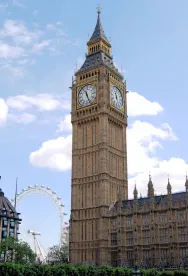With childhood obesity rates in the UK among some of the worst in Europe, the Government has set a national target to halve childhood obesity by 2030. Whilst the Government acknowledges that this is a multi-faceted problem, it has reported that evidence suggests that children’s exposure to advertising of products that are high in fat, salt and/or sugar (“HFSS”) contributes to their consumption patterns.
HFSS product advertising is currently subject to content and placement restrictions under the Committees of Advertising Practice (“CAP”) broadcast and non-broadcast codes of advertising (“Codes”); however, campaigners and industry bodies have raised concerns that adverts are not being targeted correctly and that the existing rules do not go far enough. The Advertising Standards Authority (“ASA”) and the Government have taken steps in recent months to address these issues, with the ASA launching a monitoring exercise on targeted ads and the Government consulting on options to reduce children’s exposure to HFSS ads.
The rules
Each of the Codes contains rules dealing with adverts that are directed at or feature children, as well as specific rules in relation to advertising HFSS products, whether directly or indirectly. The restrictions include:
- a prohibition on the use of licensed characters and celebrities popular with children in ads for HFSS products where the ad is targeted at under 12s;
- in relation to broadcast TV, a prohibition on HFSS products being advertised “in or adjacent to programmes commissioned for, principally directed at or likely to appeal particularly to audiences below the age of 16”; and
- in relation to ads placed in children’s media, “HFSS product advertisements must not be directed at people under 16 through the selection of media or the context in which they appear. No medium should be used to advertise HFSS products, if more than 25% of its audience is under 16 years of age”.
ASA monitoring
Although compliance with the Codes by advertisers is generally high, the ASA recently published the results of a ‘compliance sweep’ that used online avatars to monitor ads for HFSS products that were served to children. Similar technology was used earlier this year to track brands that breached CAP’s gambling rules on advertising to under 18s, which we reported on in April.
The avatars replicated the browsing habits of children of various ages and collected information about HFSS adverts appearing on children’s websites and on YouTube. The monitoring exercise found that the vast majority of HFSS ads on children’s websites were being targeted correctly; however, potential issues were identified in relation to HFSS ads being served on YouTube.
Moving away from its typically ‘reactive role’, the ASA took proactive action to notify a number of non-compliant brands which were each required to take steps to prevent further breaches, including making improvements to their targeting approach.
Government consultation
Despite strong compliance by the industry, the Government is still considering further advertising prohibitions and earlier this year launched a consultation in which it sought views on options to further reduce children’s exposure to HFSS in broadcast and online media, including the introduction of a 9pm watershed. Other options included a ‘ladder’ system for advertising restrictions on broadcast TV, the strengthening of current targeting restrictions for online advertising and a mixed option for online advertising consisting of a watershed for video and additional targeting restrictions for other types of marketing.
Whilst the watershed proposals have received extensive support from campaign groups such as The Children’s Food Campaign (Sustain) and the Obesity Health Alliance, the ASA and the Institute of Practitioners in Advertising have both stated that the proposed changes would be ineffective and disproportionate, particularly given the high level of compliance with the HFSS rules in the Codes.
Steps to take
The ASA has stated that it will carry out further compliance sweeps in future, and so advertisers should take care to continue to comply with the Codes.
Anyone advertising in the area should also make use of any available tools which allow the targeting of ads so as to restrict children and young people from seeing adverts for HFSS products. Advertisers must also ensure that terms with their media buyers are sufficient to guarantee that targeting has been put in place correctly. As with labelling or other regulated industries such as financial services, agencies may wish to make clear that responsibility for compliance with these specialist rules lies with their clients (in particular if an assessment as to whether a product is indeed HFSS is required).





 />i
/>i


